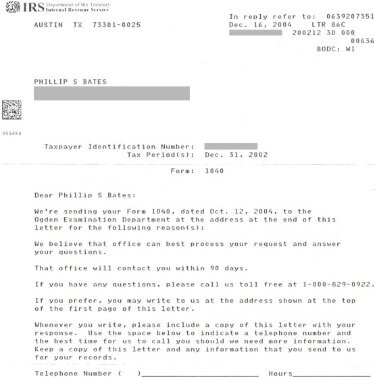How do you calculate the gross profit margin percentage? Profit Analytics Community
Contents:


Then divide that figure by the total revenue and multiply it by 100 to get the gross margin. It is important to remember that the sales margin is just one metric that businesses need to consider when making decisions about pricing and profitability. Other factors, such as manufacturing overhead costs and customer demand, also play a role in setting prices. Ultimately, businesses need to use all the information at their disposal to make decisions that will help them achieve their financial goals.
At a certain production level, the sum of your fixed and variable costs equals your total cost. To do that, take your total costs and divide them by the number of units produced. So, let’s say each jar costs you $3 to produce, and you want to make $3 in profit. Using a gross margin formula calculator helps an organization to understand their production costs and basic financial health derived through their core activities in percentage format. A high gross margin indicates that the company might be able to retain more capital.
- More detailed definitions can be found in accounting textbooks or from an accounting professional.
- The ground for break-even analysis employed in the total cost and sales price planning for products is mainly the contribution margin.
- Profit margins are key performance indicators that provide important information about how your business performs and how much profit your business generates.
- The company spent $100,000 on materials and $200,000 in labor for a COGS of $300,000.
A local manufacturer realized net sales of $500,000 over 12 months. The company spent $100,000 on materials and $200,000 in labor for a COGS of $300,000. Applying the percentage gross margin formula, the gross margin percentage is 40%.
How to Calculate Sales Margin
EBIT is the same thing as Operating Profit; EBITDA is slightly more refined, closer to Net Profit. To answer your question, yes, it should be marked up at the same rate. Using the margin and markup formula is all about getting the desired profit margin. So if a product costs twice as much, you’ll need to markup that product accordingly in order to get the same profit margin as a product that is half the cost. Is there a formula were you can get a higher percentage of accuracy in your gross profit if you have different mark up? You have a hundred different types of products and a mark up from 10%-100% in them.
- For example, if the company has $500,000 in revenues and $360,000 in total costs, the company has a net profit of $140,000.
- Net profit is calculated as revenue minus all expenses from total sales.
- However, she may be able to improve efficiencies and perhaps realize higher profits.
- The difference between margin and profit is that margin is expressed as a percentage, and profit is a numerical value.
Expressed as a percentage, it represents the portion of a company’s sales revenue that it gets to keep as a profit, after subtracting all of its costs. For example, if a company reports that it achieved a 35% profit margin during the last quarter, it means that it netted $0.35 from each dollar of sales generated. They are two different metrics that companies use to measure and express their profitability. While they both factor in a company’s revenue and the cost of goods sold, they are a little different.
Net Profit Margin
Another variation on the calculation is to compile the sales margin by salesperson. This can be useful for determining salesperson performance levels, or for the calculation of various commissions or bonuses. Calculating your sales margin is a crucial part of running a successful business. Ms. ABC owns a furniture business that designs and manufactures high-end furniture for offices and residential. She has several different types of furniture and has proven to be one of the most successful brands in her space. Below is the information appearing on the profit and loss statement at the end of the financial year 2022.
What Is Contribution Margin? – Bankrate.com
What Is Contribution Margin?.
Posted: Thu, 22 Dec 2022 08:00:00 GMT [source]
To calculate AOV, divide your total revenue by the number of orders. However, pulling off a strategic increase in price can often be easier said than done. According to IBIS World data, some of the industries with the highest profit margins include software developers, industrial banks, and commercial leasing operations. Overall, a high net profit margin suggests that a company is efficient at converting revenue into actual profit.
Gross Margin Formula
Each is defined below and accompanied by its respective formula. Therefore, the net profit margin calculation shows the profitability of an entire company, not just a single product or service. As such, it is a good way to measure a company’s overall ability to turn income into profit. When people refer to a company’s “profit margin,” they are usually referring to the net profit margin.
In 2018, the gross margin is 62%, the sum of $50,907 divided by $82,108. The net margin, by contrast, is only 14.8%, the sum of $12,124 of net income divided by $82,108 in revenue. What I understood is that mark-up is the true and ideal way of calculating the profit? However, mostly business use margin formula to calculate profit and that’s shown in audit reports. Our software, inFlow Cloud, actually allows you to bake freight and service costs into your product cost.
Businesses that are running on borrowed money may be required to compute and report their profit margins to lenders on a monthly basis. Gross margin focuses solely on the relationship between revenue and COGS. Net margin or net profit margin, on the other hand, is a little different. A company’s net margin takes all of a business’s expenses into account. Put simply, it’s the percentage of net income earned of revenues received.
Operating profit is a company’s revenue after covering operating expenses, like COGS, employee wages, depreciation, and amortization. However, operating profits are pre-tax and pre-interest, meaning it’s the revenue available before a company pays its income and property taxes and interest payments. Net sales can be used interchangeably with revenue for the sake of this formula — it is simply how much money was generated from selling products, goods, or services. Profit margins are ultimately useful for investors of any kind — profitable companies may be a less risky investment, and knowing a company’s profit margins can inform investing decisions.

So, the net profit would be how much is left over after all of that is covered. To find the net profit margin, you divide the net income by total revenue, creating a ratio. In the above case, Apple Inc. has reached a gross margin of $98,392 and 38% in percentage form.
Are sales margin and profit margin the same?
fob shipping point margin is an excellent metric to use if you want to see how much profit a company makes on each sale. Gross profit margin is a better metric to use if you want to see the overall profitability of a company. A customer’s perceived value of your product provides the basis for value-based pricing. This pricing method considers what your customers believe are the benefits of your product.
Below is a screenshot of CFI’s profit margin Excel calculator. As you can see from the image, the Excel file allows you to input various assumptions over a five year period. All cells with blue font and light grey shading can be used to enter your own numbers. All cells with black font are formulas and don’t need to be edited. They both use the same sets of numbers, but markup is based on cost, and margin is based on price.
Analyzing the Profit Margin Formula
Here, the gross profit is the returns acquired after considering the cost of goods sold, trade discounts and sales returns for deduction from the total revenue. If income statements are available on a monthly or quarterly basis, compare the gross margin figures. If margins are rising, that may be an indicator of improved efficiencies. It can also indicate that lowering prices to increase sales is having a negative impact on financial stability.
Access our members area and use our markdown planning tool to determine the intake margin you need to price at, based on your level & frequency of discounting. Combine it with our pricing blueprint & pricing course which show you how to price your entire product portfolio to get the most margins out of each product. Another time you will need to differentiate between intake margin & realized margin is when you initially set your prices.
Five ‘pandemic darling’ companies that have lost their shine – Stuff
Five ‘pandemic darling’ companies that have lost their shine.
Posted: Fri, 21 Apr 2023 17:00:00 GMT [source]
A company with a high gross profit margin but a low net profit margin might be pricing its products too low, for example, or might be spending too much on marketing or other expenses. Conversely, a company with a low gross profit margin but a high net profit margin might be charging too much for its products or might be selling products with very low margins. In business, gross profit margin and net profit margin are two critical measures of profitability. That said, as a general rule of thumb, most businesses aim for a profit margin of between 10 and 20%. If you’re selling more expensive products or services, your margin may be on the lower end of that range. If you’re selling lower-priced items, your margin may be on the higher end.
Once you’ve got a handle on everything margin is useful when looking at reports to see how much actual profit you’re making. For example if the VAT inclusive price of a product is 120€, the customer pays 120€ which includes the 20% VAT 20€. What would be my selling price to get 15% net margin with the above details. My expenses are 15% of the current sales and my customer receive a discount on every invoice about 20% . I wouldn’t necessarily try converting one thing into the other.
These include not only the costs of the goods sold, but also the costs of renting a building, utilities, transaction fees, interest on debt, income taxes and all other costs to run the business. Divide the total profit by the total income to find the sales margin as a decimal. In the toothpaste example, divide the profit of $1.80 by the income of $3 to get a sales margin of 0.6.
By considering the above factors along with the profitability margins covered in this article, you’ll be well on your way to performing complete financial analyses. When analyzing a company a good analyst will look at a wide range of ratios, financial metrics, and other measures of performance. Below is a list of commonly used performance metrics that analysts often consider in order to compile a complete and thorough analysis of a business. Again, these guidelines vary widely by industry and company size, and can be impacted by a variety of other factors. As far as your question goes we can’t say for sure that one is better than the other. We find most small businesses just starting out are better off using markup as it ensures you are generating revenue on every sale.
Expressed as a percentage, profit margin indicates how many cents of profit has been generated for each dollar of sales. Profitability ratios are financial metrics used to assess a business’s ability to generate profit relative to items such as its revenue or assets. Gross profit is the profit a company makes after deducting the costs of making and selling its products, or the costs of providing its services. If you find yourself struggling to calculate gross margin, you may find it easier to use some of the best accounting software currently available instead. This data can be pulled from your company’s accounting software or manually entered if you keep track of your sales figures manually. Your Sales margin is one of the most important financial metrics for businesses.
This 38% gross margin indicates that out of $1 of revenue from net sales, Apple Inc. can make a gross profit of 0.38 cents. Both gross margin formulas are used depending on what metrics are being evaluated. Gross margin refers to the percentage value while gross profit may be used to indicate the dollar value. Gross margin is the result of subtracting the cost of goods sold from net sales. Gross margin may also be expressed as a percentage, which is often used when comparing businesses of different sizes and different industries. Companies want high gross margins, as it means that they are retaining more capital per sales dollar.
What is Net Profit Margin? Formula for Calculation and Examples – Investopedia
What is Net Profit Margin? Formula for Calculation and Examples.
Posted: Tue, 28 Mar 2017 08:23:18 GMT [source]
When looking at your gross margin, benchmarking against averages in your industry gives you a more accurate picture of how you stack up relative to competitors. Service companies, such as law firms, can use the cost of revenue instead of the cost of goods sold . Check your margins and markups often to be sure you’re getting the most out of your strategic pricing. The margin is 25%, meaning you keep 25% of your total revenue.
Your net profit margin is your total profits divided by your total revenue. So, if you had $100,000 in sales and your COGS was $60,000, but you also had $20,000 in other expenses (like marketing, rent, etc.), your net profit would be $20,000 ($100,000-$60,000-$20,000). The gross profit margin only accounts for direct costs (i.e. COGS), while the net profit margin accounts for all expenses, including operating expenses and non-operating expenses. Operating profit margin—or earnings before interest and taxes —is the ratio a company uses to show its profitability compared to its core operations.
